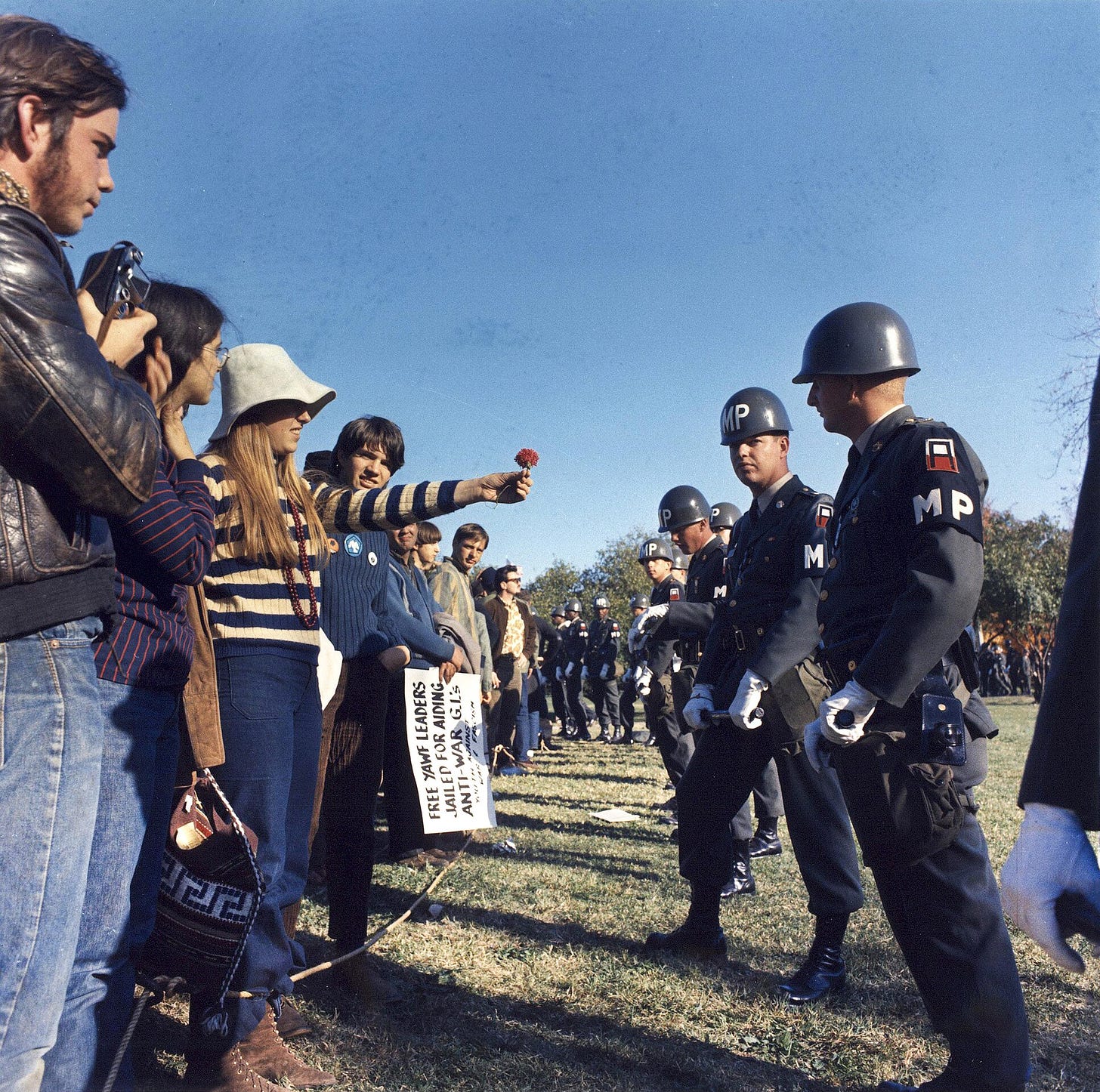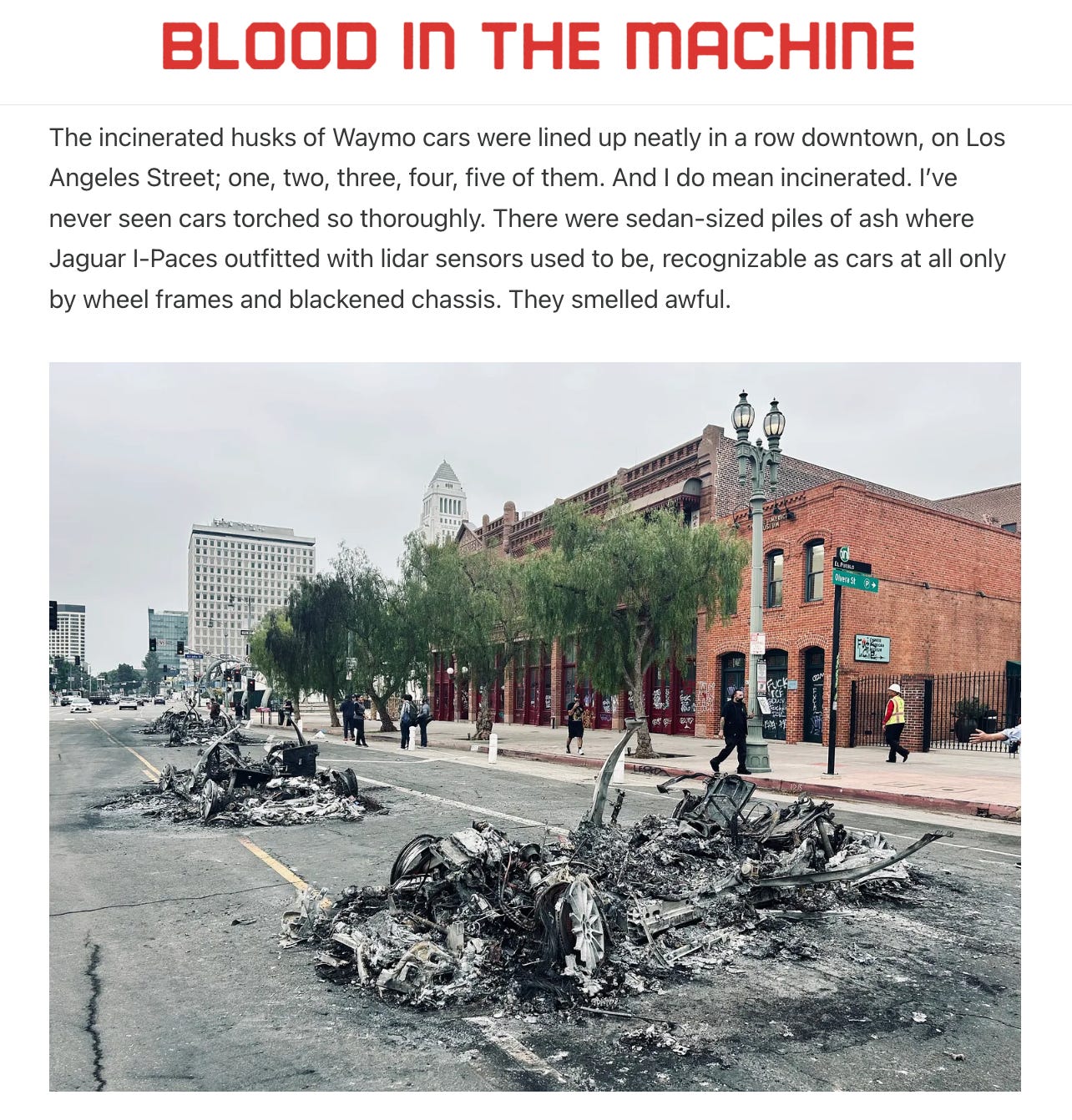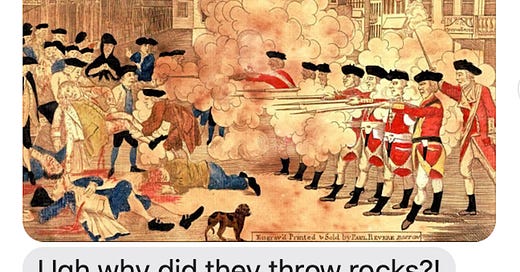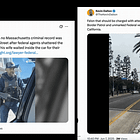What Social Scientists Say About Violent and Peaceful Resistance to Tyrannical Takeovers
Given how social media and 24/7 cable amplify the worst out there, it's not clear if peaceful resistance will even be noticed, let alone effective. But it's worth trying to keep the focus there.

As President Trump and his anti-immigrant posse intensify their fear-stoking assault on Los Angeles’s migrants and California politicians, and as trainloads of tanks arrive in Washington ahead of Trump’s and the Army’s Saturday birthday bashes, it’s more important than ever to consider what kinds of social responses can have a positive, democracy-sustaining impact.
I’d like to think resistance coverage will be filled with images of widespread but non-violent actions echoing the scene captured above at the October 1967 anti-war March on the Pentagon. Senator Bernie Sanders clearly feels this way as well, as he tweeted alluding to Martin Luther King and the civil rights campaign:
Dr. King defeated racist government officials & ended segregation through disciplined non-violent resistance. Defeating Trumpism, oligarchy & authoritarianism requires that same level of discipline. Violent protests are counterproductive and play right into Trump's playbook.
But, boy, that is beyond wishful thinking.
In my last post, I asked whether the edge-focused media climate we live in (presenting Los Angeles County as a cauldron of flash bangs, zip ties and rock throwing) is detined to doom efforts to use non-violent resistance facing the tactics of Trump’s team:
But there’s a more foundational question, setting aside how media convey what’s going on.
In protecting civil rights and community safety facing authoritarian assaults on the vulnerable among us, is there evidence (not just vibes) that peaceful approaches are best?
The Stanford sociologist Robb Willer posted a thread on X rounding up relevant research, building in part on Sanders’ plea. “Bernie is well aligned with the social science literature in this take,” Willer wrote. “There’s good reason ‘non-violent discipline’ is core to activist training.”
I got to know Willer when hosting Sustain What conversations on the many flavors of climate activism, including road blocking and paint tossing. He’s a professor of sociology, psychology and organizational behavior and directs Stanford’s Polarization and Social Change Lab. You may have caught our discussions with Dana Fisher, an American University sociologist also focused on protest as a policy lever and author of American Resistance: From the Women's March to the Blue Wave:
Here’s more from Miller’s X thread (which I unrolled here):
He points to a landmark study (and book) by Erica Chenoweth and Maria J. Stephan, Why Civil Resistance Works: The Strategic Logic of Nonviolent Conflict, and says, “Using historical+int'l data, [they] show resistance campaigns in 20th century were 2x as successful if they maintained nonviolent discipline than if they did not.”
He points to this paper with two other authors from his Stanford group: Does Violent Protest Backfire? Testing a Theory of Public Reactions to Activist Violence.
But another researcher focused on culture, violence and ethics, Tage Rai at the University of California, San Diego, posted a thread questioning Willer’s view of the literature and conclusions.
On the civil rights movement, Rai noted that views of what constitutes violence are a moving target and subjective:
[Martin Luther] King's own actions were seen as violent at the time, but are now seen as non-violent. The future may judge that burning a corporate car is a-ok…
For more on those incinerated Waymo cars, make sure to read
’s post and descriptive and photographic tour of the destruction scene.
Rai also brought up the “radical flank” concept in which edge-pushing activists make engagement with moderate wings more likely:
I think a more nuanced view is that protest wings are interdependent. Non-violent actors get more traction in negotiation b/c of leverage created by the presence of violent actors. See Hinton, and like, your own work I thought?
This recalls my previous discussions with Willer and Dana Fisher on the radical flank in climate activism. Back then, Willer said his work implies this model only works if the general public is aware a movement has more than one component. If people have only seen paint tossed and roads blocked, that can build resistance.
And that dynamic takes me back to my core concern: If the public is only seeing edge-focused news coverage, we’re screwed.
I hope not.
At gut level, I’m with Willer and Sanders on the need for a nonviolent approach to resistance, just as was the case for me in rejecting in-your-face climate activism (particularly when it was directed at pressing President Biden to declare a “climate emergency.” As I wrote back then, at least “open one lane” when you’re blocking a highway full of working- and middle-class commuters:
But even in my family, there are stark differences. A member of the younger generation of Revkins sent this message after I mentioned what I was working on:
What’s your take on this?
And do subscribe and support me if you appreciate the work I’m doing here.











Campaign Nonviolence of the Pace e Bene organization posted a quote from Pope Leo XIV yesterday. Check it out here. Campaign Nonviolence is worth following as a leader in the movement in these current times. https://aleteia.org/2025/06/01/pope-leo-xiv-urges-nonviolence-amid-rising-aggressions/